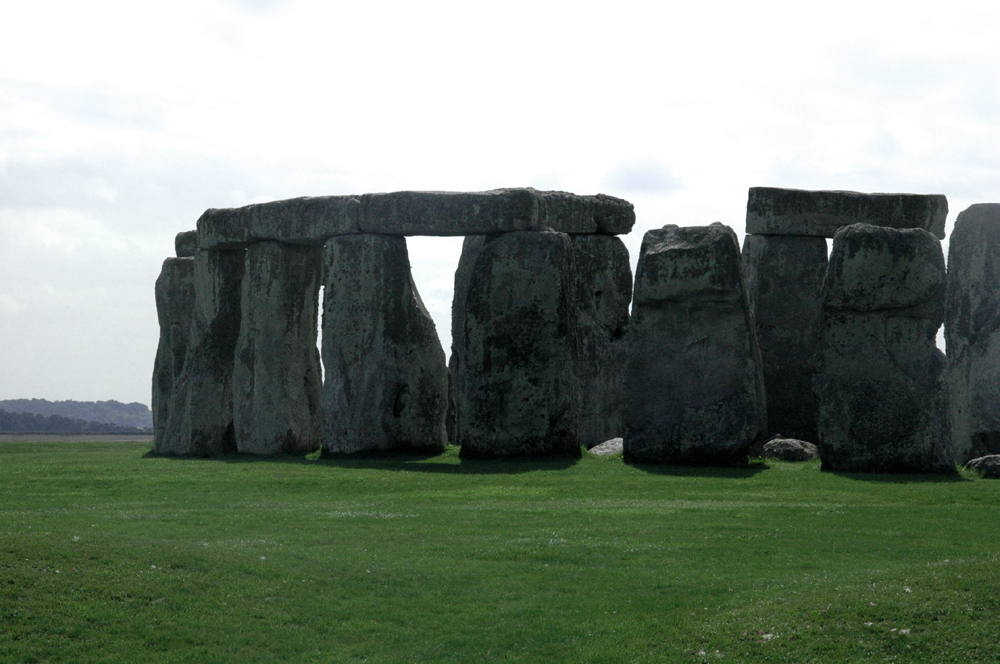


An article on heritagedaily.com - Ancient Auditory Illusions reflected in Prehistoric Art? - ponders whether some of humankind's earliest artistic achievements, including prehistoric cave paintings, rock petroglyphs and megalithic structures such as Stonehenge, may have been inspired by the sound waves.

Steven J. Waller of Rock Art Acoustics is currently addressing the Acoustical Society of America (ASA) about the influence of sound on the psyche.
'Ancient mythology explained echoes from the mouths of caves as replies from spirits, so our ancestors may have made cave paintings in response to these echoes and their belief that echo spirits inhabited rocky places such as caves or canyons. Just as light can be reflected, so too can sound, perhaps from a reflecting plane such as a large cliff face. This can result in an auditory illusion of somebody answering you from within the rock; echoes of clapping within a cave may represent thundering hooves.'
Waller's theory, he claims, is supported by acoustic measurements, which show statistically significant correspondence between the rock art sites and locations with the strongest sound reflection.
Waller recently travelled to England to carry out experiments at Stonehenge. He demonstrated that 'Stonehenge does indeed radiate acoustic shadows that recreate the same pattern as interference.'
The implication of this research, and of archaeoacoustics - the use of acoustical study as a methodological approach within archaeology - in general, is that it demonstrates that acoustical phenomena were culturally significant to prehistoric populations. Indeed, natural soundscapes of archaeological sites should be preserved for further study.
Editor's Note:
Sound was a primary focus for accumulating knowledge, culture and information in prehistory, as a great deal of transmission happened using language (the acoustic), rather than writing (the visual). Even today, the 'acoustic' is the poor relative of the 'visual', as any film maker will tell you.
Therefore we can expect to find as much out about a rock art site or a megalithic site by investigating its acoustic properties. This is perhaps especially the case in a site that does not seem to be designed for strictly functional purposes such as accommodation or defence, as music and sound are often to be found at the core of cultural, communal and ritual activities.
The rock art sites of Huashan in southern China, archaeologists argue, are a case in point; the symbols of drums depicted in the rock art were not accidental. Large bronze drums, intricately cast, would have been part of the 'prehistoric ceremony of the local ethnic culture', played from the land across the river towards the cliffs adorned with rock art.
Listen to the work of Dr Rupert Till - 'Sounds of Stonehenge':
http://www.bradshawfoundation.com/stonehenge/stonehenge_sounds/index.php
Comment
by Bradshaw Foundation
Monday 04 December 2023
by Bradshaw Foundation
Friday 30 June 2023
by Bradshaw Foundation
Thursday 06 April 2023
by Bradshaw Foundation
Thursday 24 November 2022
by Bradshaw Foundation
Tuesday 27 September 2022
by Bradshaw Foundation
Thursday 08 September 2022
by Bradshaw Foundation
Tuesday 19 July 2022
by Bradshaw Foundation
Monday 06 June 2022
by Bradshaw Foundation
Friday 11 March 2022
by Bradshaw Foundation
Wednesday 02 March 2022
by Bradshaw Foundation
Thursday 26 August 2021
by Bradshaw Foundation
Monday 16 August 2021
by Bradshaw Foundation
Tuesday 06 July 2021
by Bradshaw Foundation
Thursday 06 May 2021
by Bradshaw Foundation
Thursday 06 May 2021
by Bradshaw Foundation
Tuesday 16 March 2021
by Bradshaw Foundation
Monday 04 December 2023
by Bradshaw Foundation
Friday 30 June 2023
by Bradshaw Foundation
Thursday 06 April 2023
by Bradshaw Foundation
Thursday 24 November 2022
by Bradshaw Foundation
Tuesday 27 September 2022
by Bradshaw Foundation
Thursday 08 September 2022
by Bradshaw Foundation
Tuesday 19 July 2022
by Bradshaw Foundation
Monday 06 June 2022
by Bradshaw Foundation
Friday 11 March 2022
by Bradshaw Foundation
Wednesday 02 March 2022
by Bradshaw Foundation
Thursday 26 August 2021
by Bradshaw Foundation
Monday 16 August 2021
by Bradshaw Foundation
Tuesday 06 July 2021
by Bradshaw Foundation
Thursday 06 May 2021
by Bradshaw Foundation
Thursday 06 May 2021
by Bradshaw Foundation
Tuesday 16 March 2021
Friend of the Foundation











